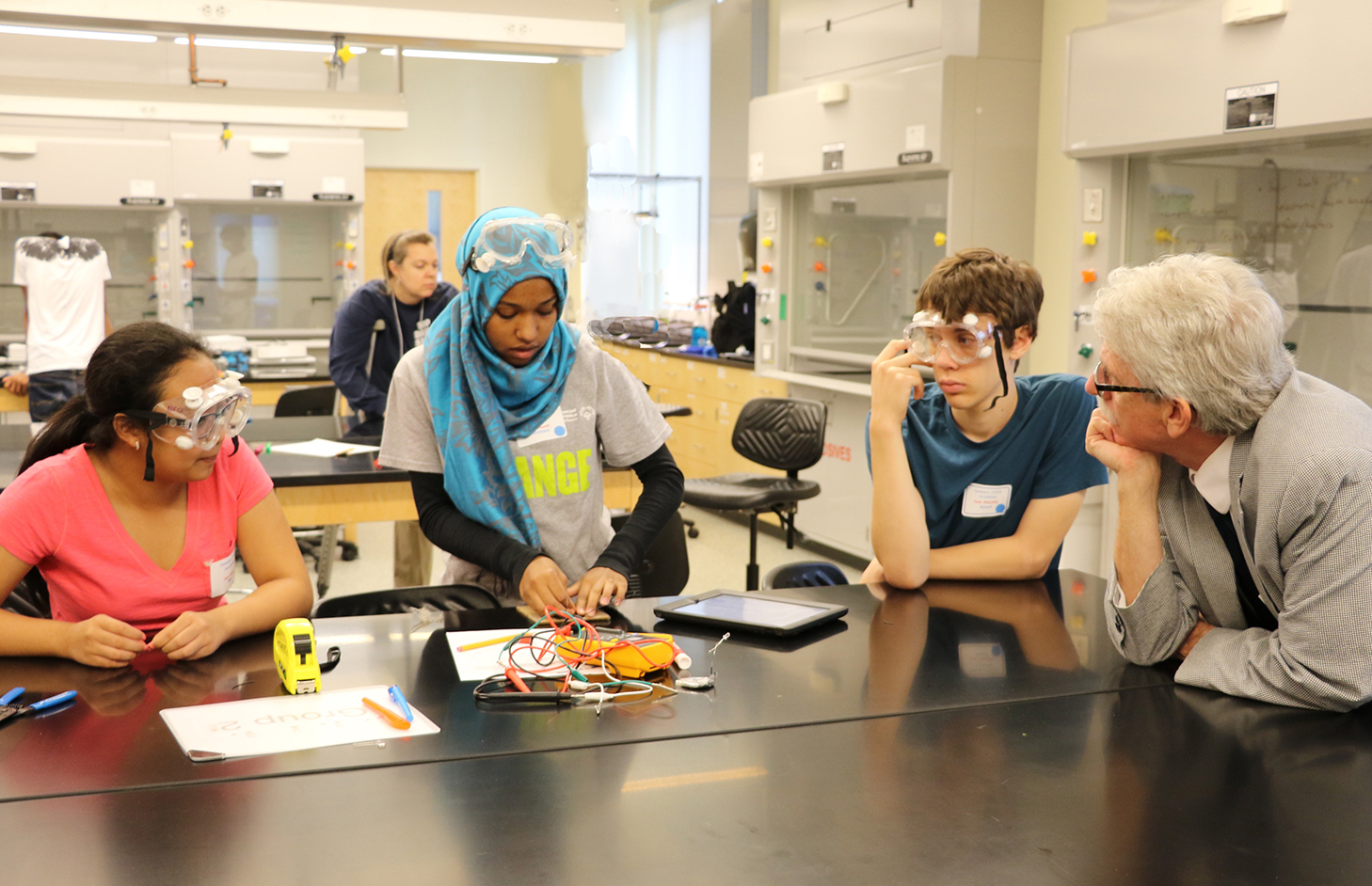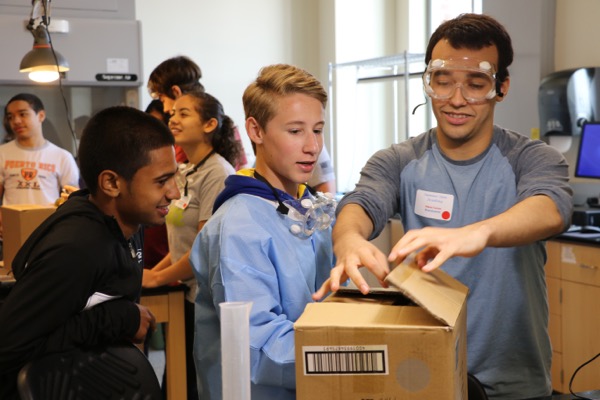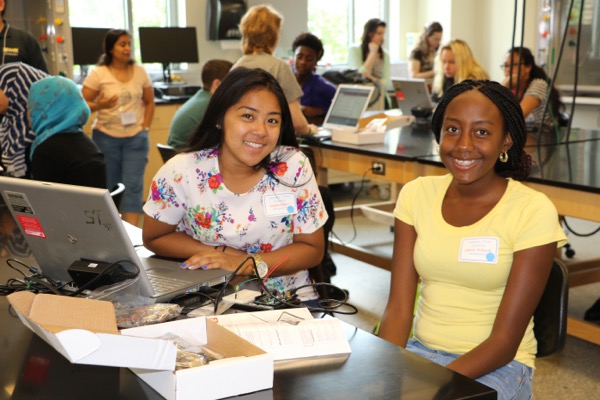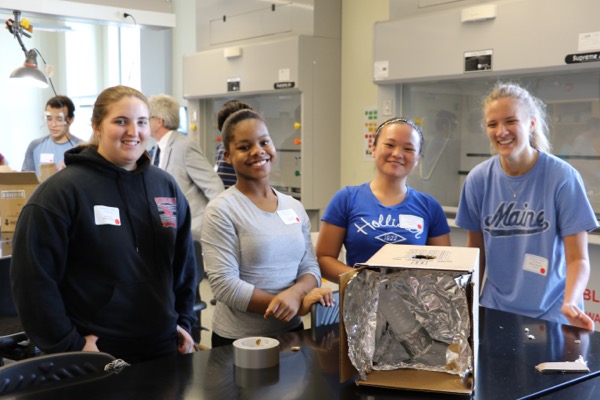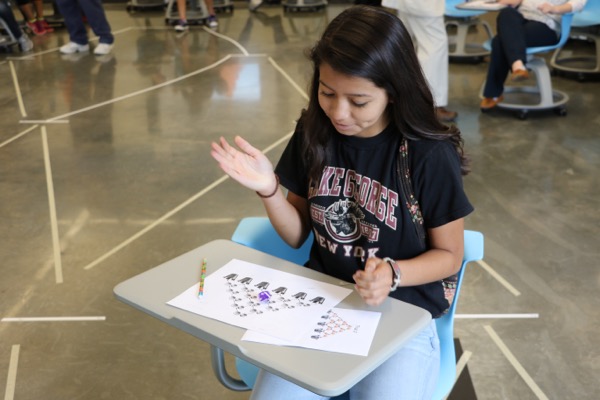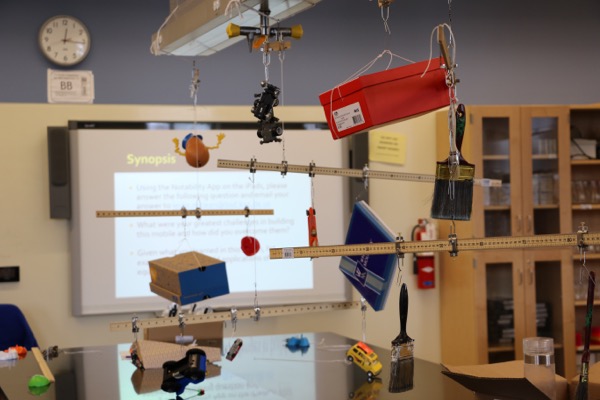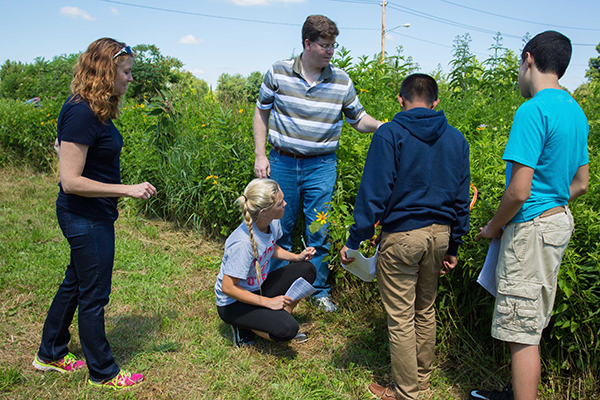Summer STEM
Teens test science, technology curriculum during student summer academy
2:44 p.m., Aug. 10, 2015--Armando Caro, a math teacher at William Penn High School, got goose bumps following a conversation with Vatekeh Corlon, a student attending the Student STEM Summer Academy held at the University of Delaware’s Harker Interdisciplinary Science and Engineering Laboratory. During the lesson “Deflecting Hyperbolators,” Corlon exclaimed, “I now have a vision for my future.”
“This is a student who hasn’t taken physics yet. Imagine that inspiration,” said Caro.
Campus Stories
From graduates, faculty
Doctoral hooding
This summer, the Student STEM Summer Academy brought together three dozen teachers and nearly 80 students from nine Delaware high schools to promote a deeper understanding of science, technology, engineering and mathematics – or STEM – curriculum. Hands-on interdisciplinary lessons were aimed at increasing the number of students considering an education or career in a STEM field.
“During the academy, students learn about things that would not necessarily interest them when presented in a traditional way,” said Brandi Anderson, a science teacher at Appoquinimink High School. “But when they collaborate with each other, and see how math and science work in the real world, they get energized.”
Interdisciplinary lessons
Using knowledge they learned at a January workshop, teams of high school teachers devised eight innovative interdisciplinary STEM lessons that they tested on their students at the Harker Lab. Students were asked to explore biodiversity in local micro-environments, design electromagnetic inductance coils, develop and test models of earthquake resistant structures, and experiment with ways to make a more effective solar powered ceiling light for use in dwellings far from the electrical grid.
“It’s easier to learn and enhance our understanding of the lessons when the activities are hands on,” said Gabby Caballero, a student from Middletown High School. “It’s a good introduction to the topics and gets me excited for the school year.”
Barbra Funk, a science teacher at Christiana High School, was impressed by the students’ interest. “Listening to their conversations gives me hope, because these kids are really great problem solvers and thinkers.”
Penny Rodrick-Williams, a biology teacher from the Tatnall School, led a biodiversity lesson. She had students take samples from two different habitats, one from the University College of Agriculture and Natural Resources (CANR) campus wetlands and a second from a grassy area. They then went back to the Harker Lab and learned about chi-square analysis and how to use a biodiversity calculator to determine biodiversity indices.
Some students were intimidated by UD’s campus and facilities, but their excitement quickly inspired them to view the campus as place were they could see themselves pursuing a college career.
“I want to be a chemistry teacher and if I could do some research in the building across the path [Colburn Laboratory], it would be the best,” said Colton Cassidy, a student from Appoquinimink High. “I really hope I can go here one day.”
A community of teachers
The academy, funded by a Delaware Mathematics and Science Partnership grant, and coordinated by UD’s John Jungck, director of the Interdisciplinary Science Learning Center, and Jon Manon, associate director of mathematics education within the Professional Development Center for Educators, is designed to fill the need for more interactive, interdisciplinary learning.
It consists of two parts, a two-day Teacher Winter Academy, where teachers take a team approach to developing STEM lesson plans, and the Student STEM Summer Academy, where they test their lessons on students.
During the summer program, the instructors not only teach materials but also observe one another to provide constructive feedback.
“I liked hearing how the other teachers incorporated the content into their lesson plans. We have different points of view, and this allowed us to share information and bounce ideas off each other,” said Anderson.
Teachers who participated in the academy noted that a supportive community has developed, across schools and across disciplines. Likewise, students found interacting with students from other schools to be positive and rewarding.
Manon said he couldn’t be more pleased to hear that. “We are hoping to fashion new communities within this project. This experience of finding like-minded others may suggest to students that there is a different life possible after high school, that the university experience might open them to possibilities in profoundly exciting ways.”
Article by Elizabeth Adams
Photos by Elizabeth Adams and Lindsay Yeager






